Place
Just imagine: The Trop site with a new stadium
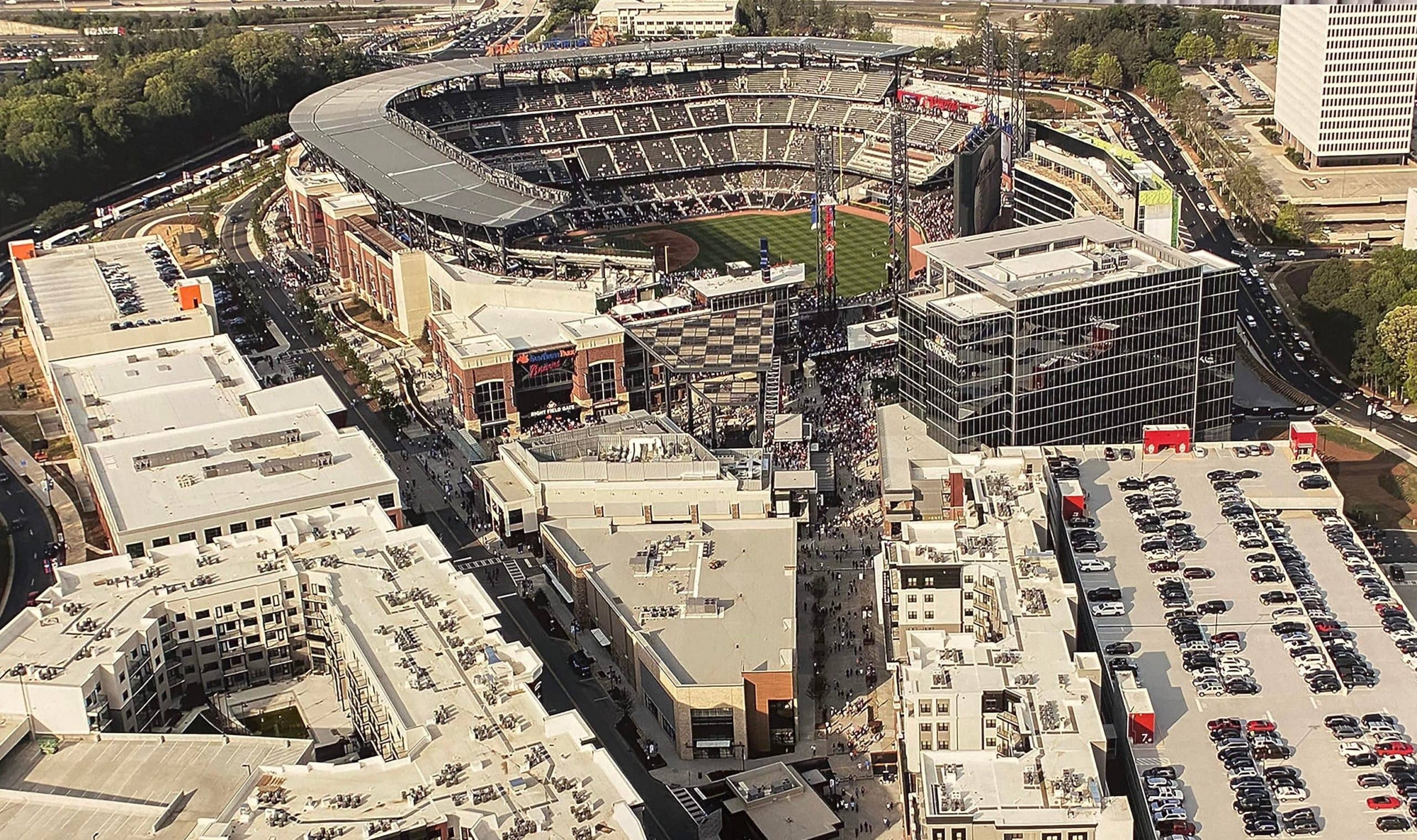
The Battery in Atlanta, Georgia, Gallagher Way in Chicago and Camden Yards in Baltimore all share the same theme – a stadium surrounded by commercial uses and residential towers that seamlessly are tied in together.
The images of the ballparks and the surrounding mixed-uses were case studies presented Tuesday to the public during the first community engagement session, which was held to start collecting feedback for the future redevelopment of the 86-acre site of Tropicana Field and the Historic Gas Plant District.

Brian Caper, manager of public-private partnerships at the city, presented images of case studies. Photo by Veronica Brezina.
“There’s a big disconnect: The intent is you go to the stadium and then you leave,” Brian Caper, manager of public-private partnerships for the city, said to the crowd inside the Foundation for a Healthy St. Pete facility, showing an aerial image of Tropicana Field and the 50-plus underutilized acres surrounding the stadium.
St. Petersburg Mayor Ken Welch, who is hosting the multiple community sessions, has made it a requirement that the master developer selected for the redevelopment of the site must include plans for a Rays stadium.
“Nearly 40 years ago after the Gas Plant community was uprooted for the successful pursuit of baseball, you now have the opportunity to bring the promises of jobs and equitable development to fruition,” Welch said during the meeting. “One of the longstanding questions surrounding the Gas Plant redevelopment has always been our Tampa Bay Rays. To provide certainty, this RFP [request for proposals] will call for a modern home for the Rays, but I want to send the right context with you tonight – this is not just a stadium project, it is a community redevelopment project.”
Following Welch’s comments, Caper displayed the first case example – an image of Gallagher Way, a mixed-use development adjacent to Wrigley Field in Chicago.

Gallagher Way, a mixed-use destination adjacent to Wrigley Field in Chicago.
“You can see housing, ground floor retail, entertainment uses, office, a hotel, and it looks like it’s integrated, part of the community. It’s created a very unique experience not only for Wrigley Field and the City of Chicago but also for the Chicago Cubs,” Caper said, showing the public gathering park space activated with splash pads and events like movies in the park. “We have to think of unique, creative opportunities for this redevelopment that will have people talking about St. Petersburg.
“This is about a third of the overall site [in comparison to Tropicana Field]. If they are able to get that type of mixed-use development in such a small compact area, think about what we can do over 86 acres,” Caper said.

The Petco Park stadium in San Diego.
He continued to jump to the other case studies, such as Petco Park in San Diego, highlighting how the urban development has retail, offices scattered throughout and residential projects that engulf the stadium.
The park is boundaried by the San Diego Trolley light rail system, providing mass transit. It is also a mile from a train station. A portion of the nearby street serves as a pedestrian promenade and connects to a public gathering space.
“Notice the scale. The stadium doesn’t really dominate. Here it looks like it belongs as part of the development,” he said. The site is roughly half of Tropicana Field.
The following case studies included Baltimore’s Camden Yards and Orielo Park, which is roughly a third of the Tropicana Field site.
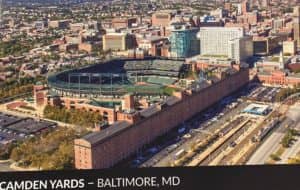
An image of Camden Yards in Baltimore.
“This is one of the first stadiums that was designed with a historic perspective,” Caper said, pointing out a historic warehouse that’s used as the Orioles’ ticket office, a brewpub and also functions as an office for a tech startup.
Pittsburg’s iconic stadium, Acrisure Stadium (formerly known as Heinz Field), was then shown as a leading example of incorporating natural environments into the design as it has done so with the river.
“We don’t have a water feature as significant as the river, but we do have a water feature that can be featured in the development [Booker Creek],” Caper said. “They have constraints as well. The interstate system is very similar to [interstates] I-275 and 175. It has a little more surface parking than what we would like to see in the Historic Gas Plant redevelopment; however, it is starting to be filled. They have offices and residential, and they are starting to create that sense of place. They have a wonderful pedestrian-access promenade along the waterfront.”
San Francisco’s Oracle Park then lit up the screen with Caper stating that it, too, took advantage of its waterfront.

Image of Oracle Park. Unsplash photo by Galaad Linosfil.
“When it was built in 2000, there wasn’t much around it. It was sort of on an island. It’s sparked redevelopment around it [since then],” Caper said.
The ballpark blends in the environment, he said, stating Oracle Park is larger than the Tropicana Field area.
Next came the example of The Yards in Washington, D.C.
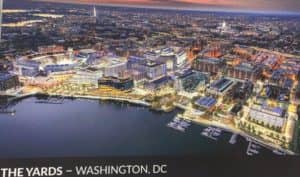
The Yards in Washington, DC.
“The ballpark came first and lead to a lot of redevelopment around it,” Caper said. “You can see those pockets starting to fill in.”
The last example shown was Atlanta. Truist Park and the Battery Atlanta has been a model for modern sports venue development. The stadium site was a master planned development encompassing 56 acres with aspects the other sites have.
“The goal will be in 10, 15 or 20 years when cities are thinking about how to redevelop their areas, they aren’t looking to Atlanta or Washington, D.C., they are looking to St. Pete and are saying, ‘they have done some great unique things. Let’s go emulate that,'” Caper concluded.
After Caper’s presentation and multiple speakers, including Sean King from Habitat for Humanity of Pinellas and West Pasco counties, spoke on the needed affordable housing elements, the city asked the public to answer questions and submit suggestions regarding the Trop site.
Two discussion questions were projected on the screen – What do you think is the most effective way to create affordable housing and What do you think is the most important consideration when creating business and workforce opportunities in the Historic Gas Plant District redevelopment?
The answers on housing ranged from suggestions of incorporating social housing to requiring developers to have a percentage of affordable and mixed-use housing, as well as creating incentives. Regarding the creation of workforce opportunity questions, some responses included the need to create high-income jobs, jobs specifically for the youth, and making commercial leases affordable with the city maintaining the lease.
Additional community engagement sessions will be held July 19 at the St. Petersburg College-Gibbs campus and July 28 at the University of South Florida’s St. Petersburg campus.
The input gathered during the community engagement sessions will be used to craft the language for the new RFP, which is expected to be released in August. Welch will select a master developer by the end of the year.


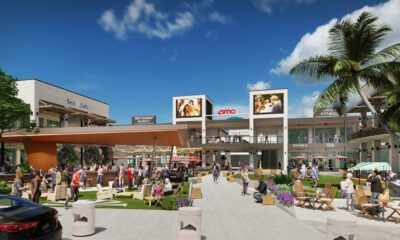

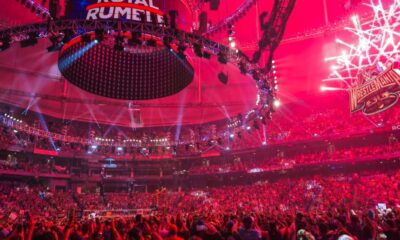



HAL FREEDMAN
July 19, 2022at2:42 pm
Shirley, that would require a referendum, which would be a sure loser. St. Petersburg’s major asset is our Waterfront Park System. It’s over 100 years old and City Charter protected. The Rays tried that several years ago. They dropped it, when they saw the public backlash. They subsequently admitted it wasn’t the best place to build a stadium. Too small, a dead-end, no easy highway access…and a losing referendum.
HAL FREEDMAN
July 19, 2022at2:36 pm
You made the point I wanted to make. The examples are all much larger cities, with a larger budget, and a larger tax base. We built one stadium already. Why should we build them another…effectively a “factory” for a private, for-profit organization. Houses, offices, recreational sites are all more important than a team that can’t even attract locals to see their games.
Shirley Hayes
July 15, 2022at2:37 pm
The stadium should be at Al Lang Field, period. When the Gas Plant Laurel Park areas were demolished, there was no known plan for a baseball stadium. There was to be housing, retail and light manufacturing. The stadium idea came much later and destroyed the hopes given when all those lives were uprooted. Our people were lied to and lives were forever altered not necessarily in a good way. The stadium in my opinion has been a big disappointment. 16th Street was to be a retail corridor for folk leaving the stadium so they could patronize the businesses there. That never happened. They planted some trees and that was it. Go back to the original promises, what of those promises can be done now? Put the stadium downtown at Al Lang field and build a parking garage on the parking lot if necessary.
Donna
July 14, 2022at8:36 am
The population of St. Petersburg is roughly 268,000. We are not Baltimore,Boston, Chicago,DC, San Fran, or San Diego. We are St. Petersburg , Florida!
We want a development that resembles and represents the ethos of St. Petersburg, not examples of megalopolis development as shown. We only have one chance to get it right!
Gina Marie
July 13, 2022at5:03 pm
You know that the examples you are giving are the designs/plans of the stadiums by the Archetect of Midtown (the team chosen)? The same architect the city hired for the trop renderings to show development designs with and without a stadium. Presented 5 years ago. Let me repeat that, the same renderings shown in this article shown as examples of where we want to go forward are the same exact development plans that the lead architect on the chosen team of Midtown designed (including the one on the cover of this article). I’m so confused lolol!